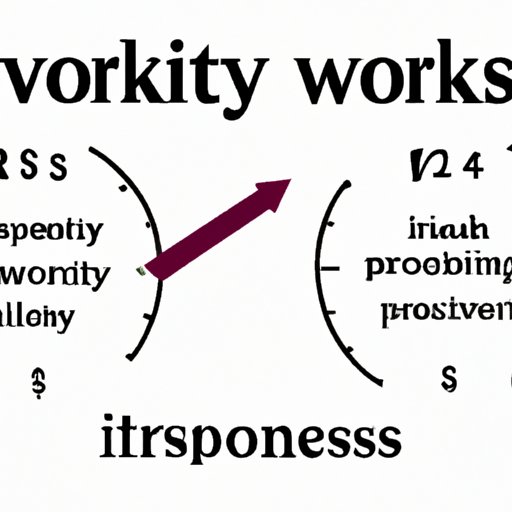Introduction
The number of hours worked by Americans has been increasing steadily over the past few decades. In 2019, the average American worked an average of 34.4 hours per week, with full-time employees working an average of 40.8 hours per week. This increase in hours worked has had a significant impact on workers’ health and well-being, as well as their productivity. In this article, we will explore how many hours does the average American work, compare American working hours to those of other countries, and examine the impact of long working hours on health and productivity.
A Statistical Look at the Average Hours Worked by Americans
According to the Bureau of Labor Statistics (BLS), the average number of hours worked per week by Americans has increased from 33.6 hours in 1980 to 34.4 hours in 2019. Full-time employees work an average of 40.8 hours per week, while part-time employees work an average of 18.8 hours. The number of hours worked varies significantly across different occupations. For example, construction workers tend to work an average of 43.3 hours per week, while professional workers work an average of 39.0 hours. The number of hours worked also varies depending on gender, race and age. Men tend to work more hours than women, and African Americans and Hispanics tend to work longer hours than whites. Older employees tend to work fewer hours than younger employees.
How Do American Working Hours Compare Globally?
American working hours are longer than most other developed countries. According to the Organization for Economic Co-operation and Development (OECD), the average number of hours worked per week by full-time employees in the United States is 40.8 hours, while the average number of hours worked in Germany is 38.1, in Japan 37.8, and in Canada 36.5. There are several factors that could explain the difference in working hours between countries. These include differences in labor laws, economic incentives, cultural values, and employer expectations.
Impact of Long Working Hours on Health and Well-Being
Long working hours can have a significant impact on physical and mental health. Studies have shown that people who work more than 55 hours per week are more likely to suffer from depression, anxiety, and sleep disturbances. They are also at greater risk of developing cardiovascular disease and other health problems. Long working hours can also lead to stress and burnout, which can further reduce productivity.

Exploring the Reasons for Long Working Hours in America
The increase in the number of hours worked by Americans can be attributed to several factors. Historically, the 40-hour workweek was established during the Industrial Revolution in the early 1900s. Since then, there has been a steady increase in the number of hours worked due to economic factors such as globalization, competition, and technology. In addition, corporate culture in the United States often places a premium on hard work and long hours, leading many workers to feel pressure to work longer hours.

Examining the Pros and Cons of Long Working Hours
There are both benefits and drawbacks to working long hours. On the one hand, working longer hours can lead to increased productivity and improved job satisfaction. However, it can also lead to fatigue, stress, and health problems. It is important to find a balance between working hard and taking care of your health and well-being.
How to Reduce Working Hours for a Healthy Work-Life Balance
There are several strategies that can help reduce working hours and improve work-life balance. These include setting reasonable deadlines, delegating tasks, and taking regular breaks. In addition, employers can implement flexible work schedules and encourage workers to take vacation time. By taking these steps, employers can help ensure that employees are able to achieve a healthy balance between work and life.

Investigating the Relationship Between Working Hours and Productivity
The relationship between working hours and productivity is complex and not fully understood. Research suggests that working too few or too many hours can lead to decreased productivity. Therefore, it is important for employers to find a balance between working hours and productivity. Time management techniques such as setting realistic goals and breaking tasks into smaller chunks can help maximize efficiency and minimize wasted time.
Conclusion
In conclusion, the number of hours worked by Americans has been increasing steadily over the past few decades, with full-time employees working an average of 40.8 hours per week. This increase in hours worked has had a significant impact on workers’ health and well-being, as well as their productivity. To reduce working hours and improve work-life balance, employers can implement flexible work schedules and encourage workers to take vacation time. Finally, it is important to find a balance between working hours and productivity, as working too few or too many hours can lead to decreased productivity.
(Note: Is this article not meeting your expectations? Do you have knowledge or insights to share? Unlock new opportunities and expand your reach by joining our authors team. Click Registration to join us and share your expertise with our readers.)
